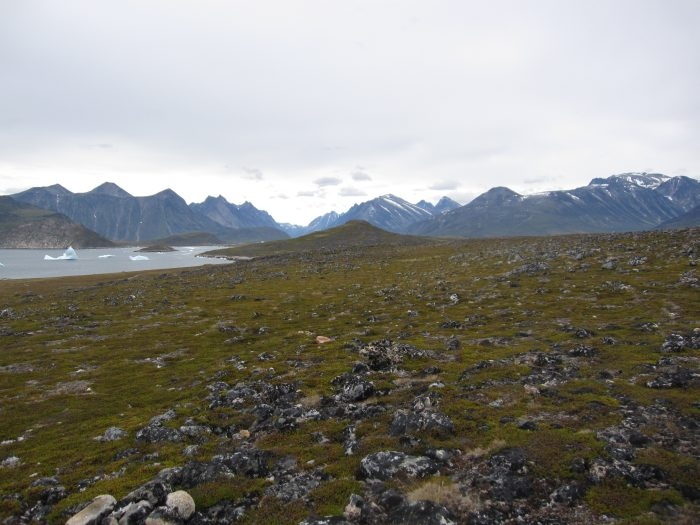South Greenland is well-known for its hot springs. At several
locations the water bubbles
up from the underground during both summer and winter at
temperatures several degrees
above freezing point. Nowhere else, however, are the springs as hot
and as big as in Uunartoq.
The name in Greenlandic refers to "the warming island", which lies
halfway between Qaqortoq
and Nanortalik and can be reached on a daytrip by boats from each
of these two towns. Uunartoq's
unique characteristic is that it's still completely as nature
intended. There are no tarmac bus car parks,
spa complexes with expensive additional products and nor is it
overrun. The only structures fashioned
by the hand of man are a gangway and two sheds in which to
change.
The uniqueness of the location has attracted scientists for
centuries. Back in 1778 the explorer
Aron Arctander reported how the water bubbles up "like living
pearls", before going on to say
that it "makes the water look like it's boiling".
People have appreciated Uunartoq's life-giving springs for more
than 1,000 years. The oldest
traces date back to the Norse settlers, who constructed the
bathtubs in boulders in order to
create a medieval spa. The Benedictine nuns living on a
neighbouring island in a convent dedicated
to Olaf the Holy helped the sick benefit from the health-giving
powers and pain-relieving effects of
Uunartoq's warm water. Stories dating back to this period relate
how it was believed that the sick
had regained their health and were relieved of their suffering.
When the Norse settlers disappeared,
the Thule race, the ancestors of present-day Greenlanders, took
over. Their history is still clear to see
and easy to access just a few hundred metres from the pools
themselves. There are plenty of
opportunities to explore the remnants of 500 years of different
building styles and communal graves
in the area. Several sites and graves date back to the 16th
century.
Qerrortuut Inuit ruins
Qerrortuut Inuit ruins
of previous settlements from late 18th and early 19th centuries can
be found
on the island. There are ruins of a nunnery built near the hot
springs after Greenland was
Christianized, around 1000.
Near the cache
